Related Research Articles

Plankton are the diverse collection of organisms found in water that are unable to propel themselves against a current. The individual organisms constituting plankton are called plankters. In the ocean, they provide a crucial source of food to many small and large aquatic organisms, such as bivalves, fish, and baleen whales.
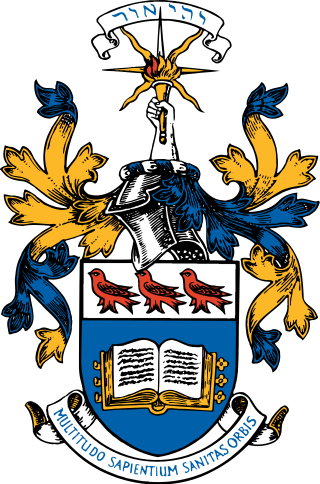
The University of Victoria (UVic) is a public research university located in the municipalities of Oak Bay and Saanich, British Columbia, Canada.

A volcano is a rupture in the crust of a planetary-mass object, such as Earth, that allows hot lava, volcanic ash, and gases to escape from a magma chamber below the surface.

Zooplankton are the animal component of the planktonic community. Plankton are aquatic organisms that are unable to swim effectively against currents. Consequently, they drift or are carried along by currents in the ocean, or by currents in seas, lakes or rivers.
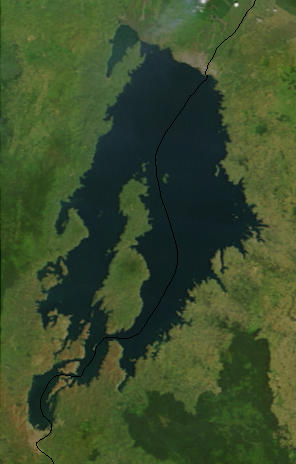
Lake Kivu is one of the African Great Lakes. It lies on the border between the Democratic Republic of the Congo and Rwanda, and is in the Albertine Rift, the western branch of the East African Rift. Lake Kivu empties into the Ruzizi River, which flows southwards into Lake Tanganyika.
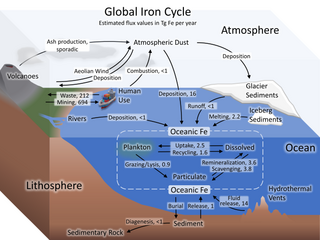
The iron cycle (Fe) is the biogeochemical cycle of iron through the atmosphere, hydrosphere, biosphere and lithosphere. While Fe is highly abundant in the Earth's crust, it is less common in oxygenated surface waters. Iron is a key micronutrient in primary productivity, and a limiting nutrient in the Southern ocean, eastern equatorial Pacific, and the subarctic Pacific referred to as High-Nutrient, Low-Chlorophyll (HNLC) regions of the ocean.
High-nutrient, low-chlorophyll (HNLC) regions are regions of the ocean where the abundance of phytoplankton is low and fairly constant despite the availability of macronutrients. Phytoplankton rely on a suite of nutrients for cellular function. Macronutrients are generally available in higher quantities in surface ocean waters, and are the typical components of common garden fertilizers. Micronutrients are generally available in lower quantities and include trace metals. Macronutrients are typically available in millimolar concentrations, while micronutrients are generally available in micro- to nanomolar concentrations. In general, nitrogen tends to be a limiting ocean nutrient, but in HNLC regions it is never significantly depleted. Instead, these regions tend to be limited by low concentrations of metabolizable iron. Iron is a critical phytoplankton micronutrient necessary for enzyme catalysis and electron transport.

Iron fertilization is the intentional introduction of iron to iron-poor areas of the ocean surface to stimulate phytoplankton production. This is intended to enhance biological productivity and/or accelerate carbon dioxide sequestration from the atmosphere. Iron is a trace element necessary for photosynthesis in plants. It is highly insoluble in sea water and in a variety of locations is the limiting nutrient for phytoplankton growth. Large algal blooms can be created by supplying iron to iron-deficient ocean waters. These blooms can nourish other organisms.

Ocean fertilization or ocean nourishment is a type of technology for carbon dioxide removal from the ocean based on the purposeful introduction of plant nutrients to the upper ocean to increase marine food production and to remove carbon dioxide from the atmosphere. Ocean nutrient fertilization, for example iron fertilization, could stimulate photosynthesis in phytoplankton. The phytoplankton would convert the ocean's dissolved carbon dioxide into carbohydrate, some of which would sink into the deeper ocean before oxidizing. More than a dozen open-sea experiments confirmed that adding iron to the ocean increases photosynthesis in phytoplankton by up to 30 times.

The cumulonimbus flammagenitus cloud (CbFg), also known as the pyrocumulonimbus cloud, is a type of cumulonimbus cloud that forms above a source of heat, such as a wildfire or volcanic eruption, and may sometimes even extinguish the fire that formed it. It is the most extreme manifestation of a flammagenitus cloud. According to the American Meteorological Society’s Glossary of Meteorology, a flammagenitus is "a cumulus cloud formed by a rising thermal from a fire, or enhanced by buoyant plume emissions from an industrial combustion process."

The Jemez Lineament is a chain of late Cenozoic volcanic fields, 800 kilometers (500 mi) long, reaching from the Springerville and White Mountains volcanic fields in East-Central Arizona to the Raton-Clayton volcanic field in Northeastern New Mexico.

Volcanic lightning is an electrical discharge caused by a volcanic eruption rather than from an ordinary thunderstorm. Volcanic lightning arises from colliding, fragmenting particles of volcanic ash, which generate static electricity within the volcanic plume, leading to the name dirty thunderstorm. Moist convection and ice formation also drive the eruption plume dynamics and can trigger volcanic lightning. Unlike ordinary thunderstorms, volcanic lightning can also occur before any ice crystals have formed in the ash cloud.
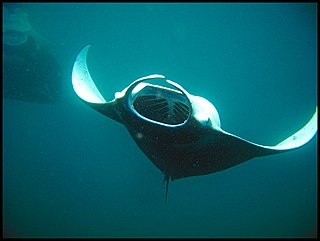
A planktivore is an aquatic organism that feeds on planktonic food, including zooplankton and phytoplankton. Planktivorous organisms encompass a range of some of the planet's smallest to largest multicellular animals in both the present day and in the past billion years; basking sharks and copepods are just two examples of giant and microscopic organisms that feed upon plankton. Planktivory can be an important mechanism of top-down control that contributes to trophic cascades in aquatic and marine systems. There is a tremendous diversity of feeding strategies and behaviors that planktivores utilize to capture prey. Some planktivores utilize tides and currents to migrate between estuaries and coastal waters; other aquatic planktivores reside in lakes or reservoirs where diverse assemblages of plankton are present, or migrate vertically in the water column searching for prey. Planktivore populations can impact the abundance and community composition of planktonic species through their predation pressure, and planktivore migrations facilitate nutrient transport between benthic and pelagic habitats.

Haida Eddies are episodic, clockwise rotating ocean eddies that form during the winter off the west coast of British Columbia's Haida Gwaii and Alaska's Alexander Archipelago. These eddies are notable for their large size, persistence, and frequent recurrence. Rivers flowing off the North American continent supply the continental shelf in the Hecate Strait with warmer, fresher, and nutrient-enriched water. Haida eddies are formed every winter when this rapid outflow of water through the strait wraps around Cape St. James at the southern tip of Haida Gwaii, and meets with the cooler waters of the Alaska Current. This forms a series of plumes which can merge into large eddies that are shed into the northeast Pacific Ocean by late winter, and may persist for up to two years.

The lipid pump sequesters carbon from the ocean's surface to deeper waters via lipids associated with overwintering vertically migratory zooplankton. Lipids are a class of hydrocarbon rich, nitrogen and phosphorus deficient compounds essential for cellular structures. This lipid carbon enters the deep ocean as carbon dioxide produced by respiration of lipid reserves and as organic matter from the mortality of zooplankton.
Barbara Mary Hickey is an Emeritus Professor of Oceanography at the University of Washington. Her research involves field measurements and computational models to understand coastal processes. She is a Fellow of the American Geophysical Union.

Little Ice Age volcanism refers to the massive volcanic activities during the Little Ice Age. Scientists suggested a hypothesis that volcanism was the major driving force of the global cooling among the other natural factors, i.e. the sunspot activities by orbital forcing and greenhouse gas. The Past Global Change (PAGES), a registered paleo-science association for scientific research and networking on past global changes in the University of Bern, Switzerland, suggested that from 1630 to 1850, a total of 16 major eruptions and cooling events had taken place. When a volcano erupts, ashes burst out of the vent together with magma and forms a cloud in the atmosphere. The ashes act as an isolating layer that block out a proportion of solar radiation, causing global cooling. The global cooling effect impacts ocean currents, atmospheric circulation and cause social impacts such as drought and famine. Wars and rebellions were therefore triggered worldwide in the Little Ice Age. It was suggested that the crisis on Ottoman Empire and Ming-Qing Transition in China were typical examples that closely correlated with Little Ice Age.
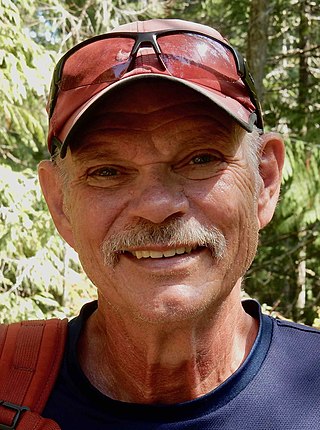
Benjamin F. Koop is a Canadian molecular biologist and evolutionary geneticist. As of 2004, he is a Tier 1 Canada Research Chair in Genomics and Molecular Biology at the University of Victoria.

The Martin curve is a power law used by oceanographers to describe the export to the ocean floor of particulate organic carbon (POC). The curve is controlled with two parameters: the reference depth in the water column, and a remineralisation parameter which is a measure of the rate at which the vertical flux of POC attenuates. It is named after the American oceanographer John Martin.
Galen Anile McKinley is a professor at Columbia University and the Lamont–Doherty Earth Observatory known for her work in the carbon cycle, particularly in the use of models to study the interface between the ocean and the atmosphere.
References
- 1 2 Government of Canada, Industry Canada (2012-11-29). "Canada Research Chairs". www.chairs-chaires.gc.ca. Retrieved 2020-01-02.
- 1 2 Watts, Richard (14 June 2019). "Minister announces more money for researchers, including at UVic". Times Colonist. Retrieved 2020-01-02.
- ↑ "Roberta C. Hamme: Oceanographer". web.uvic.ca. Retrieved 2020-02-09.
- ↑ Hamme, Roberta C.; Webley, Peter W.; Crawford, William R.; Whitney, Frank A.; DeGrandpre, Michael D.; Emerson, Steven R.; Eriksen, Charles C.; Giesbrecht, Karina E.; Gower, Jim F. R.; Kavanaugh, Maria T.; Peña, M. Angelica (2010). "Volcanic ash fuels anomalous plankton bloom in subarctic northeast Pacific". Geophysical Research Letters. 37 (19): n/a. Bibcode:2010GeoRL..3719604H. doi: 10.1029/2010GL044629 . ISSN 1944-8007.
- 1 2 Jones, Nicola (2010-10-29). "Sparks fly over theory that volcano caused salmon boom". Nature: news.2010.572. doi:10.1038/news.2010.572. ISSN 0028-0836.
- 1 2 "Volcanic eruption led to B.C. salmon boom: scientist". CBC News. CBC News. 25 October 2010. Retrieved 2 January 2020.
- 1 2 Berardelli, Phil (2010-10-06). "How Volcanoes Feed Plankton". AAAS. Retrieved 2020-01-02.
- ↑ "Effects of volcanic eruption dash promising global warming theory" . Retrieved 2020-01-02.
- ↑ Moore, Dene (2012-10-25). "Greatest risk of ocean experiment is that it will spawn more". Canada.com. Retrieved 2020-01-02.
- ↑ Larkin, Kate (2010-09-03). "Canada sees shock salmon glut". Nature: news.2010.449. doi:10.1038/news.2010.449. ISSN 0028-0836.
- 1 2 "Pan-Canadian research team led by UVic investigates ocean's role in slowing climate change". Victoria News. 2019-07-11. Retrieved 2020-01-02.
- ↑ Vescera, Zak (2019-07-15). "University of Victoria to lead study on climate change impact in oceans". Vancouver Sun. Retrieved 2020-01-02.
- ↑ "Roberta Hamme - Google Scholar Citations". scholar.google.ca. Retrieved 2020-01-02.
- ↑ "UVic pronounces three new Canada Research chairs". Victoria News. 2019-06-14. Retrieved 2020-01-02.
- ↑ "3 Canada Research Chairs for UVic - University of Victoria". UVic.ca. 14 June 2019. Retrieved 2020-01-02.
This article needs additional or more specific categories .(July 2021) |